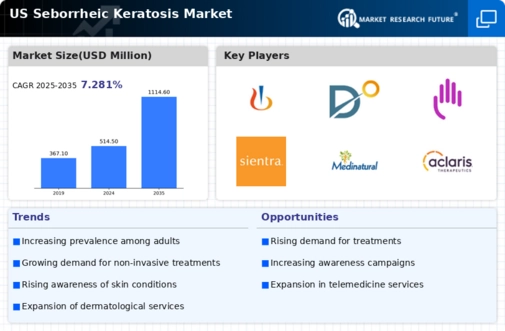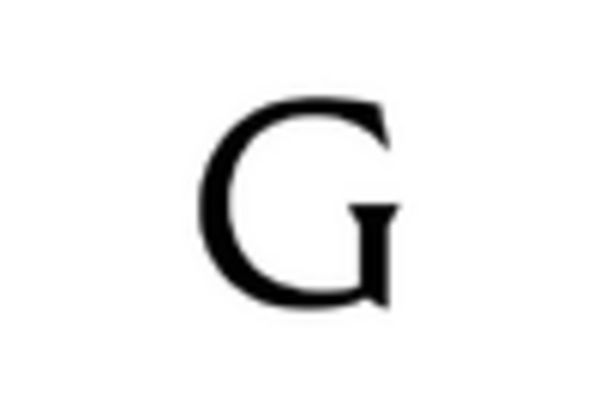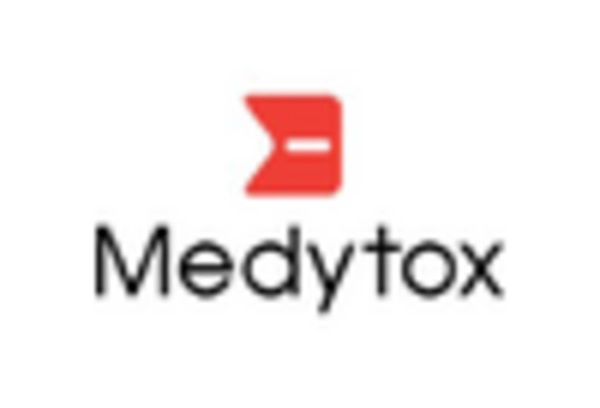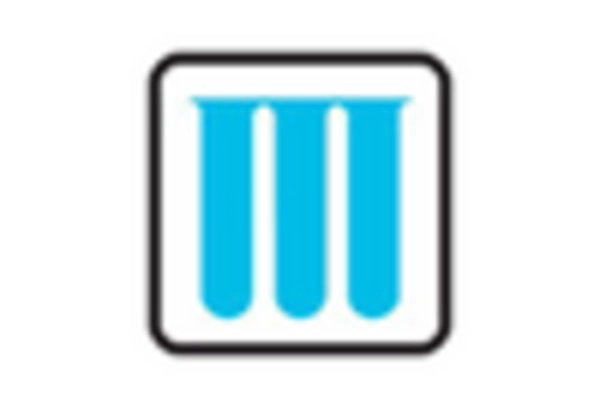Increased Healthcare Expenditure
Rising healthcare expenditure in the US is a crucial factor impacting the seborrheic keratosis market. As individuals allocate more resources to health and wellness, there is a corresponding increase in spending on dermatological care. The US healthcare expenditure is projected to reach approximately $4 trillion by 2025, indicating a growing willingness to invest in skin health. This trend is likely to facilitate greater access to dermatological services and treatments for seborrheic keratosis. Additionally, insurance coverage for dermatological procedures is expanding, further encouraging patients to seek treatment. As financial barriers diminish, the seborrheic keratosis market is expected to experience growth, driven by increased patient engagement and treatment uptake.
Rising Influence of Telemedicine
The rising influence of telemedicine is reshaping the landscape of the seborrheic keratosis market. With the advent of digital health technologies, patients can now access dermatological consultations remotely, which enhances convenience and accessibility. Telemedicine has gained traction, particularly among populations that may have previously faced barriers to in-person visits. This shift is likely to increase the number of patients seeking diagnosis and treatment for seborrheic keratosis, as it allows for timely intervention without the need for extensive travel. Furthermore, the integration of telehealth services into traditional healthcare systems is expected to continue, potentially expanding the reach of dermatologists. As telemedicine becomes more prevalent, the seborrheic keratosis market may see a surge in patient engagement and treatment adherence.
Increasing Incidence of Skin Disorders
The rising incidence of skin disorders, particularly seborrheic keratosis, is a notable driver in the seborrheic keratosis market. Studies indicate that approximately 11% of adults in the US experience this condition, with prevalence increasing with age. This growing patient population necessitates effective treatment options, thereby propelling market growth. The demand for dermatological services is expected to rise, as individuals seek medical advice and intervention for skin lesions. Furthermore, the increasing awareness of skin health among the general public contributes to more individuals seeking diagnosis and treatment, which in turn stimulates the seborrheic keratosis market. As healthcare providers become more attuned to the needs of this demographic, the market is likely to expand, driven by both the need for treatment and the desire for improved skin aesthetics.
Growing Demand for Aesthetic Procedures
The increasing demand for aesthetic procedures is a significant driver in the seborrheic keratosis market. As individuals become more conscious of their appearance, there is a heightened interest in cosmetic dermatology. Seborrheic keratosis, often perceived as a cosmetic concern, drives patients to seek removal options for aesthetic reasons. The market for aesthetic treatments is expected to grow at a CAGR of around 10% over the next few years, reflecting the rising consumer interest in skin health and appearance. This trend is further supported by the proliferation of social media, where individuals showcase their skin transformations. Consequently, the seborrheic keratosis market is likely to see increased demand for both medical and cosmetic interventions, as patients seek to enhance their skin's appearance.
Technological Innovations in Dermatology
Technological advancements in dermatology are significantly influencing the seborrheic keratosis market. Innovations such as laser therapy, cryotherapy, and advanced topical treatments have emerged, offering patients effective solutions for managing their skin conditions. The introduction of minimally invasive procedures has enhanced patient comfort and reduced recovery times, making treatments more appealing. Moreover, the market for dermatological devices is projected to reach approximately $20 billion by 2026, indicating a robust growth trajectory. These innovations not only improve treatment outcomes but also increase patient satisfaction, which is crucial in a competitive market. As healthcare providers adopt these new technologies, the seborrheic keratosis market is likely to benefit from increased treatment options and improved patient access to care.

















Leave a Comment